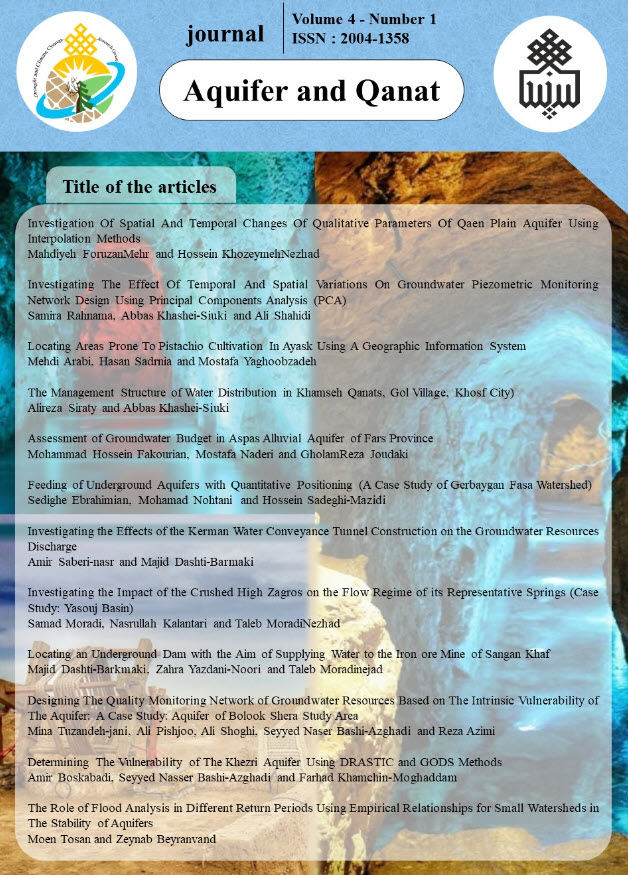Document Type : Original Article
Authors
1 water engineering
2 Department of Water Engineering, Faculty of Water and Soil, Zabol University, Zabol, Iran
Abstract
Considering the importance of assessing the status of groundwater quality for industrial and agricultural uses, this study investigates the quality of groundwater in the South Khorasan region and examines the spatial continuity of the variable electrical conductivity in this region. Isatis and Surfer softwares were used to graphically display the changes of qualitative parameters in the study area and to perform sequential Gaussian simulations to investigate the spatial continuity between the electrical conductivity variables. After normalizing the data, modeling was performed, so that first the variogram was drawn and then the appropriate model to fit the experimental variogram based on the least SSR error, using cross-evaluation of the best variogram model among the models (spherical, power, cubic, etc), Selection and modeling were performed. After the modeling stage, Gaussian simulations were performed and the spatial continuity map of the electrical conductivity variable was presented. The results of preliminary statistics showed that in terms of electrical conductivity classification for salinity, most sampling areas have an electrical conductivity of 2250-750 and above 2250. Next, the spatial coherence of the variable was investigated. The probability map of values with an electrical conductivity higher than 750 μM / cm showed that most areas have high electrical conductivity. The study of preliminary statistics on the classification of sodium content in agricultural waters in the study area also showed that the sodium percentage of most sampling points is between 40 and 60%.
Keywords

